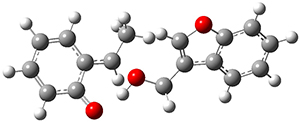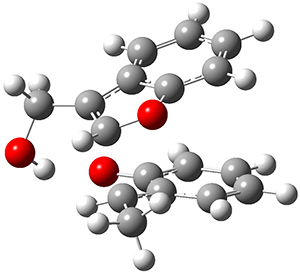GiovanniMaria Piccini, Maristella Alessio, and Joachim Sauer (2016)
Contributed by Jan Jensen
Piccini et al. reproduce experimental rate constants for the reactions of methanol with ethene, propene, and trans-2-butene catalyzed by an acidic zeolite (H-MFI), to within one order of magnitude. Key to this is the inclusion of anharmonic effects using the method I highlighted earlier, but it should be noted that the reaction is biomolecular so entropy effects may be larger than for unimolecular reactions such as most enzyme catalysed reactions. However, anharmonic effects also changed the activation enthalpy by as much as 8 kJ/mol.
Piccini et al. reproduce experimental rate constants for the reactions of methanol with ethene, propene, and trans-2-butene catalyzed by an acidic zeolite (H-MFI), to within one order of magnitude. Key to this is the inclusion of anharmonic effects using the method I highlighted earlier, but it should be noted that the reaction is biomolecular so entropy effects may be larger than for unimolecular reactions such as most enzyme catalysed reactions. However, anharmonic effects also changed the activation enthalpy by as much as 8 kJ/mol.
The PBE/plane wave electronic energy is corrected using MP2/CBS computed for a smaller systems plus a CCSD(T)/TZVP correction computed on an even smaller system. Such corrections are becoming increasingly feasible for many problems and this study shows that the usual harmonic treatment of the vibrational free energy may become the limiting factor in terms of accuracy. However, anharmonic methods such as the one used here must be implemented, in a black box-fashion, in at least one of the major quantum chemistry packages before we'll see them widely applied.
See also this highlight of the article

This work is licensed under a Creative Commons Attribution 4.0

This work is licensed under a Creative Commons Attribution 4.0



